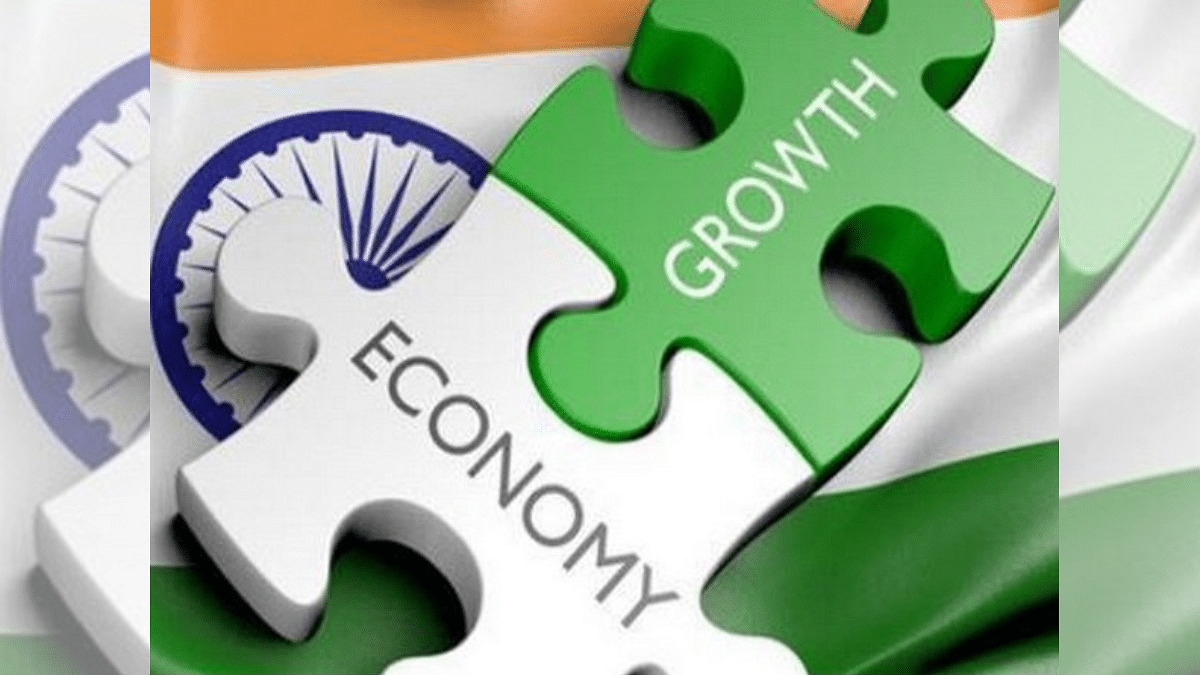New Delhi: India’s GDP growth could be about 1.5 percentage points or Rs 4.5 lakh crore higher immediately after simultaneous elections at the central and state levels, as compared to right after non-simultaneous elections, a paper by 15th Finance Commission Chairman N.K. Singh has found.
However, the paper, included in the report submitted by the high-level committee on simultaneous elections to President Droupadi Murmu Thursday, added that the fiscal deficit for the Centre and the states would rise at a faster rate following simultaneous elections.
Inflation, on the other hand, was seen to be lower following concurrent elections.
“Comparing changes in real national GDP growth before and after episodes of simultaneous and non-simultaneous elections, the estimates suggest that on average, real GDP growth is higher following episodes of simultaneous elections, while we find a decrease post the non-simultaneous episodes,” said Singh’s paper, co-authored with Prachi Mishra, chief of the International Monetary Fund’s (IMF) systemic issues division.
The paper went on to say that the magnitude of difference between the GDP growth increase post simultaneous elections and the decrease following non-simultaneous elections was about 1.5 percentage points.
“To put the magnitudes in perspective, 1.5 percent of GDP is equal to Rs 4.5 lakh crore in FY 2024, half the public spending on health, and one third that on education,” the paper added, saying this estimate fell within the band of other publicly available estimates on the subject.
At the state level, it found that the average GDP growth rates were about 1.3 percentage points higher following simultaneous elections as compared to after non-simultaneous elections.
On the inflation front, the paper said the retail inflation rate, as measured by the Consumer Price Index, was lower in the run-up to simultaneous elections compared with before non-simultaneous ones.
“While the inflation rates tend to fall around both simultaneous and non-simultaneous episodes, they tend to fall more around simultaneous episodes,” the paper said. The difference, it added, was of about 1.1 percentage points at the national level.
As part of its analysis at the central level, the research paper considered the years 1951-52, 1957, 1962, and 1967, when simultaneous elections were held for the Lok Sabha and the Vidhan Sabhas.
Also read: Visible infra progress, Make in India push — what’s driving PSU stocks to meteoric highs
However, since macroeconomic data is limited for the years before the 1960s, it modified this approach slightly. It also considered years where 40 percent or more of the states had their Vidhan Sabha elections in the year of the national elections as “simultaneous” electoral cycles. Based on the modified definition, five election cycles were defined as simultaneous: 1962, 1967, 1977, 1980 and 1984-85.
For any given state, if the assembly election fell in the same year as the Lok Sabha elections, that state election was defined to be a simultaneous election for the state.
Higher fiscal deficit after simultaneous elections
Interestingly, the paper found that simultaneous elections led to a faster increase in the fiscal deficit of the government as compared to non-simultaneous elections, something it said may appear counterintuitive.
On average, it found that the fiscal deficit of the Centre was 1.28 percentage points of GDP higher following simultaneous elections, compared to non-simultaneous ones. It found similar results at the state level as well.
“What we find, however, suggests that governments tend to spend relatively more after as compared to before the elections around simultaneous election episodes, or they tend to spend relatively less before,” the paper said.
Notably, it said this could possibly mean that simultaneous elections reduced the quantum of freebies promised before elections, and increased the amount spent by new governments.
“One potential explanation for this result could be that the higher the number of elections, the greater the degree of freebies and pre-election promises, which would raise government spending before the episode for non-simultaneous elections,” the paper said.
“The observed rise in government expenditure only after the episode for simultaneous elections would be consistent with a story of streamlining and higher efficiency in the electoral process,” it added.
More capital spending post simultaneous elections
An important result the paper found was that government spending became increasingly skewed towards capital creation following simultaneous elections versus non-simultaneous ones — something that could feed into the higher GDP growth and fiscal deficit finding.
“In other words, not only do the findings suggest relatively higher public spending post simultaneous election episodes, but spending that is also skewed towards capital compared to revenue — again consistent with the evidence for relatively higher growth post simultaneous elections,” the paper said.
The paper found that elections also have an impact on government spending in the run-up to polls, as government investment decisions have to conform to the Model Code of Conduct. Private sector investment is affected as well, it added, due to the uncertainty created by the potential of a new government coming to power.
“Asynchronised electoral cycles, with a larger number of elections happening across different levels of government in any given year, can significantly increase the total number of days under the Model Code of Conduct, directly reducing public expenditures and, in particular, investment,” the paper said.
“Even more importantly, the resulting uncertainties could also have spillovers for private investment and the broader economy,” it added.
The findings confirm this, with the ratio of gross fixed capital formation to GDP seen to be 0.5 percentage points higher following simultaneous elections as compared to after non-simultaneous elections.
The paper also found that educational attainment levels could be higher after simultaneous elections as this would result in fewer disruptions to the teaching staff who get diverted to election duty. Similarly, it found a marginal decrease in crime levels following simultaneous elections as compared to asynchronised elections due to police and paramilitary forces being diverted on fewer occasions.
(Edited by Tikli Basu)
Also read: India is outsourcing its tax burden to companies. Better for Modi government, not taxpayers

